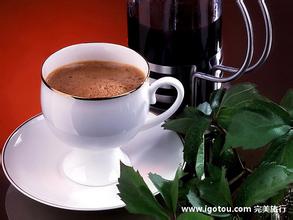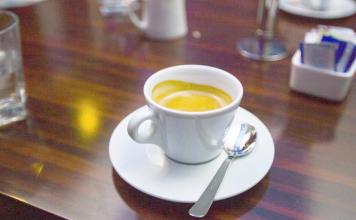Meticulous and smooth Cuban Crystal Coffee Flavor introduction to the characteristics of Fine Coffee in Manor
The area is 109884 square kilometers [3], of which Cuba is 104555.61 square kilometers and the surrounding islands and reefs are 3126.43 square kilometers.
Cuba is located in the northwest of the Caribbean Sea, facing Haiti to the east, 140 kilometers to the south from Jamaica and 217 kilometers to the north from the top of the Florida Peninsula.
Cuba, composed of more than 1600 islands such as Cuba and Youth Island (former Pine Island), is the largest island country in the West Indies.
Topography
Cuba's coastline is about 6000 kilometers long, most of which are flat, with mountains in the east and middle and hills in the west, and most of the territory has a savanna climate. [6]
In addition to Cuba, it also includes more than 1600 surrounding islands of different sizes. The islands are made up of five islands: Savannah, Camag ü ey, Colorados, Queen's Garden and Canareos. Youth Island (also known as Pine Island), located in Batahuano Bay, is the only larger island along the coast. The total length of the coastline is 6073 kilometers. Most of the island of Cuba is flat, with mountains accounting for only 1x4 of the total area. There are three major mountains in the country: the Guaniganico Mountains, the Eskambria Mountains and the Maestra Mountains (the highest mountain range in Cuba, of which Mount Turchino is 1974 meters above sea level, which is the highest peak in Cuba). The longest river in Cuba, R í o Cauto, is 370km long. [1] Cuba has more than 200 rivers and thousands of streams, most of which run north-south, so the current is shallow and fast. The Cato River, which flows east-west to the north of the Maestra Mountains, is the largest river in Cuba, but it is only 370 kilometers long and is the only navigable river in Cuba. Cuba's coastline is tortuous, generally steep in the north and flat in the south, with many good ports. Almost all of them are bays in the shape of pockets and bellies, which are very beneficial to shipping. Among them, the important bays are Havana Bay, Nippe Bay, Guantanamo Bay, Santiago Bay, Sienfugos Bay, Onda Bay and Matansas Bay.
In 1748, coffee was introduced into Cuba from Domiga, and Cuba began to grow coffee ever since. With fertile land, humid climate and abundant Rain Water, Cuba can be called a natural treasure land for coffee cultivation. The suitable natural conditions provide a favorable natural environment for the growth of coffee trees, and coffee is well planted and developed here. In Cuba, the cultivation of coffee is regulated by the state. The best coffee growing area in Cuba is located in the Central Mountains. Because this area not only grows coffee, but also produces quartz, crystal and other precious minerals, it is also known as Crystal Mountain. At present, Crystal Mountain Coffee is synonymous with top Cuban coffee. One of the remarkable features of Crystal Mountain Coffee is that the particles are large, and the bright green Crystal Mountain Coffee with bright beans is very precious. This is mainly for two reasons. The first reason is the economic sanctions imposed by the United States against Cuba and the non-opening up of Cuban imports. The second reason is that at present, Cuban coffee beans are mostly acquired by the French and Japanese markets, especially Japan, so it is difficult to buy coffee beans directly from Cuba. In spite of this, the status of Cuban coffee in the hearts of global coffee lovers can still be compared with Jamaican Blue Mountain Coffee.
Crystal Mountain Coffee beans are typical island beans with a clean and delicate taste, slightly sour taste, not strong but long-lasting, with sweet fruit aromas. The coffee brewed by it has a rare and perfect taste: it is bitter with aroma and a mellow and smooth taste. It slightly contains wine-like bitterness and a touch of sweetness, and even a hint of tobacco, meticulous and smooth, fresh and elegant. Many flavors are mixed together, and the match is almost perfect.
To brew Crystal Mountain Coffee, it is best to use a hand brew or American coffee maker, the water temperature is below 85 ℃, the match wind cooking method firepower is not too big, the time is not too long. When tasting coffee, because it is mellow, you can put more milk, but less sugar, usually two or three tablespoons (coffee cup spoon) is just right. I believe its unique taste will leave a deep impression on you.

Important Notice :
前街咖啡 FrontStreet Coffee has moved to new addredd:
FrontStreet Coffee Address: 315,Donghua East Road,GuangZhou
Tel:020 38364473
- Prev

Introduction to the characteristics of the manor producing area of Indonesian civet coffee with special flavor
It is widely distributed in tropical and subtropical regions of China, including southern Gansu, Sichuan, Shaanxi Qinling, southern Anhui, Zhejiang, Fujian, Jiangxi, Hubei, Hunan, Guangdong, Hainan, Guangxi, Guizhou, Yunnan and low-altitude areas southeast of Xizang. Xizang's Chayu, Bomi, Motuo, Linzhi, Milin, Cuona and other places. Previous literature records (Shou Zhenhuang et al., 1964) in Jingjiang, Jiangsu
- Next

Introduction to the flavor characteristics of coffee beans in the province of Avachapan in El Salvador
Formerly known as San Salvador, Bahia. An important natural deep-water port on the Atlantic coast of Brazil, the capital of Bahia state. It is located on the east bank of Todos (Santos) Bay. With a population of 3459377 (as of August 1, 2010), it is the eighth largest city in Brazil. The ancient city, one of the oldest cities in Brazil, was founded in 1549, and the first churches were built by Jesuit priests in 1549. Until 1763
Related
- Detailed explanation of Jadeite planting Land in Panamanian Jadeite Manor introduction to the grading system of Jadeite competitive bidding, Red bid, Green bid and Rose Summer
- Story of Coffee planting in Brenka region of Costa Rica Stonehenge Manor anaerobic heavy honey treatment of flavor mouth
- What's on the barrel of Blue Mountain Coffee beans?
- Can American coffee also pull flowers? How to use hot American style to pull out a good-looking pattern?
- Can you make a cold extract with coffee beans? What is the right proportion for cold-extracted coffee formula?
- Indonesian PWN Gold Mandrine Coffee Origin Features Flavor How to Chong? Mandolin coffee is American.
- A brief introduction to the flavor characteristics of Brazilian yellow bourbon coffee beans
- What is the effect of different water quality on the flavor of cold-extracted coffee? What kind of water is best for brewing coffee?
- Why do you think of Rose Summer whenever you mention Panamanian coffee?
- Introduction to the characteristics of authentic blue mountain coffee bean producing areas? What is the CIB Coffee Authority in Jamaica?

